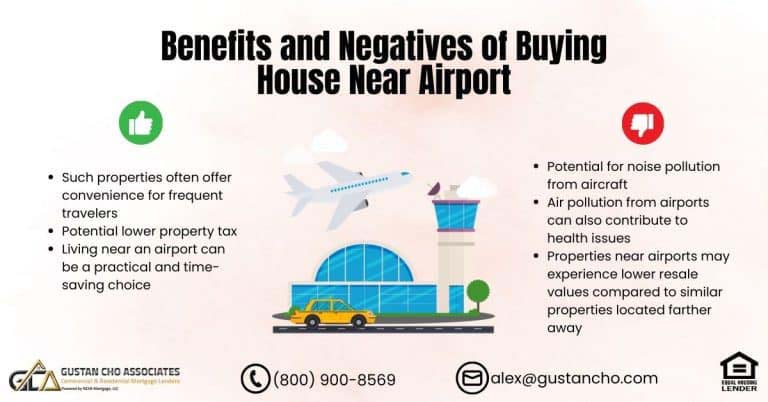This blog addresses the eligibility criteria for obtaining a mortgage and securing approval despite having experienced employment gaps within the last two years. Lenders have informed numerous borrowers that mortgage qualification is contingent on maintaining the same job for the preceding two years.
Contrary to this notion, it is optional to have continuous employment in the same position for the past two years to be eligible for mortgage loans. What is essential for homebuyers is a thorough two-year work history, which only sometimes requires consecutive employment in the same job for the entire duration. It’s crucial to recognize the distinction between the two.
A frequently asked question is whether I qualify for a mortgage if I had some gaps in employment and multiple jobs in the past two years. The answer is YES, you CAN. As long as you have not had a gap in employment for longer than six months, you will qualify for a mortgage if you have a full-time job. This holds even with gaps in employment.
You are eligible for a mortgage loan through Gustan Cho Associates even if you have experienced employment gaps in the last two years. Having an employment history over the past two years is optional to meet the mortgage qualification criteria. Agencies like HUD, VA, USDA, Fannie Mae, and Freddie Mac require a 2-year employment history, but continuous employment is optional according to their guidelines.
The subsequent paragraphs will elaborate on qualifying for a mortgage despite employment gaps in the past two years.
Can I Get a Mortgage With Employment Gaps?
Borrowers remain eligible for mortgage approval despite experiencing employment gaps within the last two years. Gaps do not hinder approval support in employment during this period. You can still qualify for a mortgage even if you’ve held multiple jobs. While mortgage underwriters may be concerned about frequent job changes, this should encourage you as it does not impede adherence to agency mortgage guidelines.
Mortgage underwriters may downgrade borrowers from an automated underwriting approved status to a manual underwrite using underwriting discretion due to gaps in employment or having multiple jobs in the past two years. If you are told you are getting downgraded from AUS approved to manual underwrite, you will need to transfer your file to other lender with no lender overlays. Gustan Cho Associates has no overlays on government and conventional loans.
Employment gaps in the past two years will allow you to secure approval for a mortgage loan. Why do some borrowers face mortgage loan denials due to not being continuously employed in the same job for the past two years? The answer lies in lender overlays, which we will explore in the following paragraphs, specifically focusing on employment gaps.
Get a Mortgage With Employment Gaps
Apply For A Mortgage Loan Today!What Are Overlays on Employment Gaps By Lenders?
Most lenders impose additional criteria regarding employment gaps within the last two years. Housing agencies establish uniform mortgage guidelines for employment gaps. Despite agency guidelines permitting employment gaps in the preceding two years, mortgage approval may still hinge on individual mortgage company requirements. Borrowers must adhere to the specific criteria set by their chosen mortgage company to qualify, and having employment gaps is generally discouraged.
One important fact many borrowers do not realize is if you had gap in employment for longer than six months and return back to work to the same job, there is no waiting period after returning to work to qualify for a mortgage.
Lender overlays refer to the situation where a mortgage lender maintains standards that surpass the minimum guidelines set by HUD, VA, USDA, Fannie Mae, and Freddie Mac. Both government and conforming agency guidelines allow for employment gaps within the past two years, with a condition that the gap is at most six months. In such cases, there is no waiting period for a new job, except for the requirement to provide a paycheck stub before closing.
However, if the employment gap extends beyond six months, the borrower must have been in their new job for six months before qualifying for a mortgage.
What Is an Acceptable Employment Gap For a Mortgage Approval?
This section will address common questions about employment gaps and their impact on mortgage loan approval for both government and conventional loans. Employment gaps can arise for various reasons, and each instance is unique. Individuals may take time off work for diverse reasons, such as layoffs or job termination.
Career changes often necessitate a break for individuals returning to school. Some may opt for a hiatus after receiving a more lucrative job offer, while others may take an extended break to enhance their skills for a better career.
Employment gaps is not a problem when it comes to get a mortgage loan approval. Lenders require an overall two year work history and not past two years of consecutive work experience. Schooling counts as work experience. Full time students with no work experience can qualify for a mortgage if they have been in school full time for two years preceding getting a job.
Regardless of the reason, each employment gap situation is distinctive and remains acceptable for mortgage approval.
Can You Buy a House With Gaps in Employment?
One common inquiry at Gustan Cho Associates pertains to the possibility of purchasing a home despite having gaps in employment. Indeed, it is feasible. Having fewer than six months of employment gaps helps your mortgage eligibility. However, if the gap exceeds six months, you must have been in your current job for at least six months.
A person can be off the workforce for the past ten years and get a full-time job and qualify for a mortgage after being in the new full-time job for six months. The borrower just need to list the two years of job experience they had ten years ago before they did not work for the ten years.
Nevertheless, some lenders may stipulate that employment gaps are not permissible, requiring mortgage applicants to have remained in the same job for the past two years. If a lender denies qualification due to employment gaps within the last two years, contact us at Gustan Cho Associates.
We are a licensed lender operating in 48 states, including Washington DC, Puerto Rico, and the U.S. Virgin Islands, without imposing additional requirements on government and conventional loans.
Can You Get Declined For a Mortgage Due To Employment Gaps in The Past Two Years?
Yes, you can get declined for a mortgage due to employment gaps in the past two years by a lender with overlays. Even though the agency mortgage guidelines state you can qualify for a mortgage with gaps in employment in the past two years, the lender can have their lending requirements.
Every lender can have their lending requirements higher than the agency guidelines. These higher lending guidelines by the lender are called overlays. However, just because one lender says NO can’t mean another with no overlays will approve you with employment gaps. Gustan Cho Associates does not have lender overlays in employment gaps in the past two years.
Here are the agency mortgage guidelines for employment gaps:
Fannie Mae Guidelines:
- Employment History: Fannie Mae generally looks for a two-year employment history. However, there may be allowances for gaps in employment or changes in employment.
- Recent Employment: Borrowers should have a stable, continuous, and verifiable employment history.
- Gaps in Employment: Employment gaps of less than six months usually do not require special consideration. Gaps exceeding six months up to 12 months may be acceptable if the borrower can demonstrate a stable income and employment history before and after the gap.
- Documentation: Borrowers with recent gaps in employment may be required to provide a written explanation for the gap and possibly supporting documentation.
Freddie Mac Guidelines:
- Employment Stability: Freddie Mac emphasizes the stability of employment and income.
- Gaps in Employment: Similar to Fannie Mae, shorter employment gaps are generally more acceptable. Gaps exceeding six months may be considered, especially if the borrower has a stable employment history before and after the gap.
- Additional Documentation: Borrowers with employment gaps may need to provide additional documentation, such as a written explanation and proof of income during the gap period.
- Consideration of Other Factors: Freddie Mac considers compensating factors, such as a strong credit history and substantial cash reserves, to offset concerns related to employment gaps.
How Do You Justify Employment Gaps?
A frequent question we receive pertains to justifying employment gaps. Mortgage underwriters typically request a letter of explanation regarding any periods of unemployment. However, it’s important not to panic. There’s no definitive right or wrong response for these letters. While most lenders prefer to see a consistent two-year employment history, lacking this isn’t necessarily a deal-breaker.
Gustan Cho Associates ignores employment gaps less than six months. Even if you changed careers in the past two years and have more than one employment gap, you will qualify for a mortgage. Mortgage lenders need to use their discretion that the ability for continued employment in the next three years is likely.
In facilitating mortgage loans, I regularly assist borrowers with employment gaps. Demonstrating a stable work history, particularly with the same employer, is crucial for mortgage lenders and other creditors. Some banks and mortgage companies may impose additional requirements, such as two years of continuous employment with the same employer, but these are not universal mortgage guidelines. This article explains how to obtain a mortgage despite employment gaps in the past two years.
Gaps In Employment In The Past Two Years
Mortgage applicants may possess a history of holding various positions and experiencing employment gaps within the last two years yet still be eligible for home loans. A two-year timeframe with employment gaps could be considered a specific mortgage lender overlay. Still, it is important to note that this is not a compulsory guideline outlined by Fannie Mae, Freddie Mac, VA, USDA, or HUD.
Letter of Explanation For Gaps in Employment
If mortgage loan applicants have gaps in employment, mortgage underwriters will need a letter of explanation as to why they have employment gaps. John Strange of Gustan Cho Associates explains how to write a letter of explanations to mortgage underwriters:
A letter of explanation to mortgage underwriters should not be a lengthy blog or have too much information. Just make the letter’s content of explanation short, to the point, and facts.
Mortgage underwriters prefer concise letters and may need more time for lengthy explanations. A brief statement in the letter of explanation is generally satisfactory. Meeting the criteria for a mortgage loan is generally unproblematic for individuals who have maintained consistent employment for two years, even with multiple jobs. Nonetheless, the impact of employment gaps on qualifying for mortgage loans should be considered.
Mortgage Lenders That Accept Mortgage With Employment Gaps
If you encounter challenges with a mortgage underwriter due to employment gaps, please get in touch with us at Gustan Cho Associates. If the underwriter continues to impose new conditions even after you’ve provided a letter of explanation, it indicates their reluctance to approve the mortgage loan.
Mortgage underwriters will ask for a letter of explanation for employment gaps. This is totally routine and normal. Most underwriters will just want a letter of explanation and file the LOX away in the file. Other underwriters will analyze and dig into the gap in employment and scrutinize the new job and look for a way to deny the loan.
For individuals with six or more months of employment gaps, eligibility for a mortgage loan requires a continuous full-time job for at least six months. Those with gaps in employment lasting less than six months may still qualify for a mortgage with a new full-time job, provided they present a full-time employment offer letter. Additionally, obtaining clearance to close requires the submission of 30 days’ worth of paycheck stubs from the current employer.
Connect you with lenders who specialize in mortgages for borrowers with employment gaps
Apply Online And Get recommendations From Loan ExpertsReasons For Gaps In Employment
There are various reasons for gaps in employment. There are many reasons why people have gaps in employment:
- It can be maternity leave
- It could be personal time off due to divorce or death in the family
- It can be military deployment or being in school full time
Some folks decide to work part-time, which turns into a full-time job.
Importance of Income Stability For The Next Three Years
Lenders’ main concern is that the mortgage loan borrower has income stability when they apply for a mortgage. Lenders want to see borrowers have a stable income and can repay their mortgage.
The ability to repay the new mortgage is what all mortgage underwriters need to determine. Things they look out for is declining income, and a written verification of employment. Mortgage underwriters want to feel confident the borrower has the ability to repay for the next three years.
Mortgage Lenders want to feel confident that borrowers have a solid, stable job and income stability for the next several years where the mortgage loan does not go into default. Past work history is a good indicator of future job stability. Lenders will need to feel confident that the borrower’s employment and income will likely continue for the next three years.
Does HUD Require Two Years of Employment History?
The Federal Housing Administration does not require two years of continuous employment history. Overall two-year employment history is required on all loan programs. Full-time schooling counts as full-time employment history.
Homebuyers do not have to worry about having extended gaps in employment to qualify and get pre-approved for a mortgage. Borrowers are eligible to qualify for a mortgage with an extended gap in employment as long as they have been in the new job for six months.
Many borrowers feel they do not qualify for a mortgage loan because they have extended employment gaps. Or because they had short-term jobs or job hopped.
Waiting Period To Get Mortgage With Extended Employment Gaps
The gap in employment waiting period guidelines are as follows: There is no waiting period with a gap in employment for less than six months. There is a six-month waiting period for starting a new job with a gap in employment longer than six months. If there is an employment gap over six months and the person goes back to work full-time in the same job, there is no waiting period requirement on the job they went back to.
As long as the gap in employment is less than six months, there is not waiting period on the new job. If the employment gap was longer than six months, then there is a six month waiting period at the new job. 1099 wage earners need to wait two years.
Suppose borrowers can show six months of full-time continuous employment history and get employment verification from the employer that the likelihood of continuous full-time employment is promising. In that case, borrowers will qualify for a mortgage loan. We need to document two years of employment history, but the employment history does not have to be continuous.
Lending Guidelines on Employment History
The following is from the HUD Handbook 4000.1 says about income and employment stability for mortgage loan borrowers. Gaps in employment longer than a month require a letter of explanation, as mentioned earlier. Dale Elenteny of Gustan Cho Associates explains how lenders analyze employment gaps:
If employment gaps were caused by full-time schooling, then transcripts need to be provided to the mortgage underwriter. In most instances, proving continued employment likeliness is not an issue unless the industry goes downhill.
The probability of continued full-time employment is mortgage lenders’ most important concern. The past employment history is used as an indicator of continued full-time employment.
Employment and Changes in Employment
HUD also recommends that mortgage underwriters favor mortgage loan applicants who often change jobs within the same employment field due to income and benefit considerations such as job promotions or advancement in their fields. The bottom line is that HUD encourages job hoppers regarding FHA mortgage loan qualifying purposes.
Employment gaps are not always a bad thing. Sometimes, women need to take maternity leave and take a break from work. There are instances where people need to take time off to go to school for additional training to get more knowledge.
An example of how job changes become a compensating factor is when a person changes jobs for better opportunities. For example, let’s take an actual case scenario at Gustan Cho Associates. A person joined the U.S. Army at 18 years old. After serving four years as a Military Policeman in the Army, he became a campus security officer at Harper College in Palatine, Illinois.
After working at Harper College as a Campus Security Guard, he was hired at a local police department as a dispatcher. After a few years, the person became certified as a Chicago Police Officer. Here is a case of changing jobs multiple times, and between changing jobs, there were job gaps. However, these people changed jobs to further their careers, which is a compensating factor.
Your Dream Home Is Just A Few Steps Away
Apply For A Mortgage Loan Today!Gaps In Employment For Conventional Loans
Conventional mortgage lenders are slightly more strict when it comes to employment gaps. Most conventional mortgage lenders do want to see continuous full-time employment. However, employment gaps are not a deal-breaker. Any employment gaps under six months are allowed with only the most recent paycheck stub from the new employer.
Gustan Cho Associates has no lender overlays on gap in employment. Borrowers with extended employment gaps are eligible for a mortgage. We have no overlays on government and conventional loans. Gustan Cho Associates also has dozens of no-income verification mortgage loan programs available.
For any employment gaps of six or more months, the mortgage lender wants to see six or more months in their current job. Borrowers who need to qualify for a mortgage with a direct lender with no overlays on government and conventional loans can contact us at alex@gustancho.com. The team at Gustan Cho Associates is available seven days a week, evenings, weekends, and holidays.
Frequently Asked Questions (FAQ) – Employment Gaps Lending Guidelines For Mortgage Approval
-
Can I qualify for a mortgage if I’ve had multiple jobs and employment gaps in the last two years? Yes, you can still qualify for a mortgage even if you’ve had gaps in employment or held multiple jobs in the past two years. As long as the employment gaps are not longer than six months, and you have a full-time job, you are eligible for a mortgage.
-
Is it mandatory to have continuous employment in the same position for the past two years to be eligible for a mortgage? No, continuous employment in the same position for the past two years is not mandatory for mortgage qualification. Agencies like HUD, VA, USDA, Fannie Mae, and Freddie Mac require a two-year employment history, but continuous employment is optional according to their guidelines.
-
Why do some borrowers face mortgage denials due to not being continuously employed in the same job for the past two years?Mortgage denials due to employment gaps may be attributed to lender overlays. Lender overlays are additional criteria imposed by some lenders that go beyond the standard guidelines set by government agencies. It’s crucial to understand the lender’s specific criteria when applying for a mortgage.
-
What are lender overlays, and how do they impact mortgage approval with employment gaps? Lender overlays refer to additional criteria imposed by a mortgage lender that surpass the minimum guidelines set by HUD, VA, USDA, Fannie Mae, and Freddie Mac. While agency guidelines permit employment gaps of up to six months, some lenders may have stricter requirements, leading to potential mortgage denials.
-
How can I justify employment gaps when applying for a mortgage? Mortgage underwriters may request a letter of explanation for any periods of unemployment. It’s important to provide a concise and factual letter, addressing the reasons for the employment gaps. Lenders typically want assurance of continued full-time employment in the next three years.
-
Can you get declined for a mortgage due to employment gaps in the past two years? Yes, some lenders with overlays may decline mortgage applications due to employment gaps. However, lenders’ requirements vary, and it’s possible to find lenders with no overlays that are more flexible in considering employment history.
-
Are there waiting periods for getting a mortgage with extended employment gaps? Yes, there may be waiting periods depending on the length of the employment gap. Gaps of less than six months generally have no waiting period. For gaps exceeding six months, a continuous full-time job for at least six months may be required to qualify for a mortgage.
-
What documentation is needed for mortgage approval with employment gaps? Documentation requirements may vary, but providing a letter of explanation for employment gaps and, if applicable, transcripts for periods of full-time schooling may be necessary. Additionally, proof of income stability and employment verification may be requested by mortgage underwriters.
This blog about Employment Gaps Lending Guidelines For Mortgage Approval was updated on February 7, 2024.












I have a burrower who has had a employment gap for more than 6 months and it was due to covid , and has only been in new job for a 4 month period. I`m trying find a loop hole, can you help. CON or fha
If the borrower returns to the same job after the 6-month employment gap, then you are fine. However, if the borrower has a job gap longer than six months, he needs to wait six months on his current job to qualify for a mortgage.
i have employment gap for more than 6 months and it was due to covid , and has only been in new job for a 4 month period. I`m trying find a loop hole, can you help. CON or fha
That is false that conventional loans are more strict than government loans when it comes to gaps of employment. On the contrary, they are less strict. If you’ve had a gap of employment for more than 6 months and are trying to secure an FHA loan, you would need to be on the job for 6 months before qualifying. If you’ve had a gap of more than 6 months and are trying to secure a conventional loan, you can qualify right away if you have a full time hourly or salaried job.